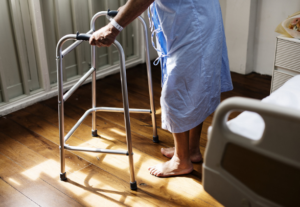22 Aug 2019
How To Prepare A Senior’s Home For Safely Aging In Place
 Numerous studies and other evidence support the thought that, whenever possible, the best situations for seniors is aging in place, living in their own home.
Numerous studies and other evidence support the thought that, whenever possible, the best situations for seniors is aging in place, living in their own home.
Aging in place allows a senior to be most comfortable, surrounded by their treasured possessions and memories, while also more easily maintaining their social network. Unless health or mental issues specifically preclude aging in place, this arrangement can be their most positive option.
However, many homes are ill-prepared for an aging elderly population. A home needs to be prepared so that the environment is safe for them to live in, while still being the familiar place they enjoy. These are some of the most crucial areas to focus on.
Six Critical Areas When “Age-Proofing” A Senior’s Home
1. Flat or ramped entrances
As a senior ages, stairs become increasingly challenging- particularly when someone is carrying groceries or other objects. Carrying objects that impair full vision can cause tripping. When possible, the entryway should be modified to remove stairs, and a ramp installed instead.
2. An open kitchen
Many kitchens are too cramped for seniors to easily use or have features at inconvenient heights. Look for ways to open up the kitchen -such as an island arrangement- to give seniors more room to move. Also, try to reduce the need for seniors to use cabinets which are out of reach.
3. Bathroom safety
The bathroom is probably the most dangerous room in the house for a senior. The floor should be modified to be non-slip, and the bathtub/shower should have railing installed. If the budget allows, upgrading the shower to a curbless design will be a big help too.
4. Floor layout
Balancing seniors mobility needs against their desire to keep their home familiar can be tricky, but moving furniture around could help. Seniors may need a walker or wheelchair at some point, so if you are remodeling, the time could be right to modify the interior layout to make room for any mobility devices.
5. First-floor bedrooms
In the event the bedroom is on an upper floor, we strongly recommend relocating to a ground floor room instead. Relieving a senior of the need to regularly climb stairs in their day-to-day life could help prevent a fall. Also, if they have mobility issues, look at lowering their bed, adding railing, or both.
6. Knobs, faucets, and other fixtures
Finally, look at upgrading various fixtures and usable hardware in the home. In general, handles and push-levers are always going to be better than knobs, especially handles that do not require grasping to operate. Think in terms of minimizing the level of dexterity required.
Contact Neighborly Home Care to Enable Your Senior Loved One to Age in Place
When you are attempting to help a senior age in place, assistance might be needed in day-to-day activities. Neighborly Home Care can help! Contact us to discuss how 24-hour home care and other in-home care services in Philadelphia can improve a senior’s aging experience.
Contact Us
Are you a Home Care Worker?
Free Dementia FAQs eBook
The families we serve keep saying great things.
I just wanted to tell you how grateful we are that Neighborly Home Care stepped in & took over taking care of my Dad when we really needed it, no questions asked. Our caregiver has become part of the family and we know we can depend on her being there every day & taking great care of my Dad. He misses her when she’s not there!